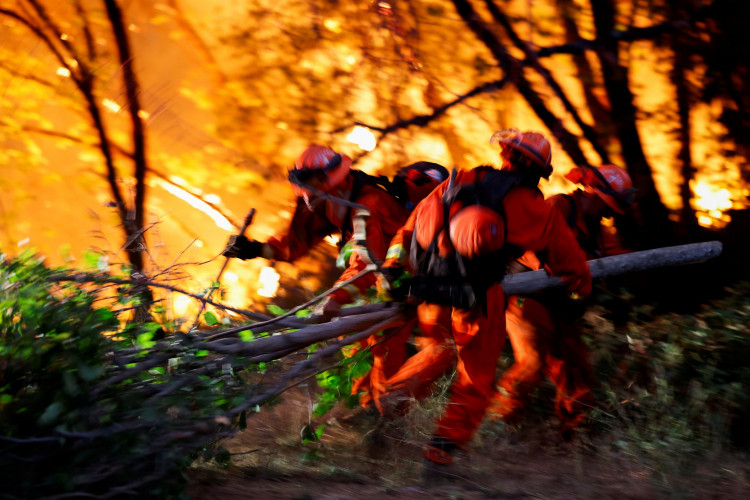California is currently grappling with a severe heatwave that has pushed temperatures to dangerously high levels, reaching up to 117°F in some areas, and triggered widespread wildfires. The heatwave, described as potentially life-threatening, is expected to intensify during the Fourth of July holiday week, affecting nearly 90 million people under heat alerts across the United States.
The extreme heat is driven by a ridge of high pressure off the West Coast and another ridge extending from Kansas and Missouri to the Gulf Coast, according to the National Weather Service (NWS). Sacramento, California's capital, is experiencing an excessive heat warning with temperatures forecasted to range between 105°F and 115°F. Palm Springs is bracing for temperatures as high as 117°F.
The heatwave has created ideal conditions for wildfires, with red flag fire warnings issued across the state. In Butte County, about 70 miles north of Sacramento, the Thompson Fire has forced the evacuation of approximately 13,000 people. The fire, which broke out before noon on Tuesday, rapidly expanded to over 3 square miles by the evening, with zero containment. Firefighters are working under scorching conditions to protect homes, while helicopters drop water on the fast-moving blaze.
Governor Gavin Newsom has activated the State Operations Center to coordinate California's response, dispatch mutual aid, and support local communities. The federal government has approved funding to aid firefighting efforts. Smoke from the fires has drifted towards Sacramento, creating hazy skies above the city.
The heatwave has significantly impacted daily life for residents. Katherine Powers, a homeless woman in Sacramento, sought refuge in the shade, explaining her difficulties in accessing cooling centers due to the need to carry all her possessions. Darlene Crumedy, a resident of Fairfield, said she avoids using air conditioning due to high costs, relying instead on fans and cold water to stay cool.
An analysis revealed that heat killed more than 2,300 people in the United States last year, a record that experts believe is likely an undercount. Dr. Arthur Jey, an emergency services physician with Sutter Health in Sacramento, emphasized the importance of staying hydrated and cool to prevent heat stroke. "With heat stroke, it looks like a stroke," Jey said, describing symptoms such as significant headaches, blurry vision, and profuse sweating.
The NWS has warned that the heatwave could last for at least a week, with long-range forecasts suggesting even longer durations. San Francisco, known for its cool summers, is expected to see temperatures in the upper 80s downtown, while coastal areas like Ocean Beach will remain cooler.
Pacific Gas & Electric (PG&E) has implemented public safety power shutoffs in parts of 10 counties to prevent wildfires from being ignited by downed or damaged electrical wires. Approximately 12,000 customers were notified of potential power cuts and provided with information on where to obtain necessities like ice, water, and Wi-Fi.
The heatwave arrives on the heels of back-to-back wet winters, which have spurred abundant grass growth, providing ample fuel for wildfires. The Basin Fire, currently the largest blaze in California, has burned over 21 square miles of the Sierra National Forest in Fresno County and is only 17% contained.
Climate change, driven by the burning of fossil fuels, is dramatically increasing the frequency, intensity, and duration of heatwaves. "This heatwave, with highs in the 110s°F in many inland areas, is highly unusual for its duration and intensity," said Dr. William Schaffner, a professor at Vanderbilt University School of Medicine.
The NWS has issued excessive heat warnings and advisories, some lasting until next Wednesday, with computer models indicating that the heatwave may not subside even then. "It's just going to be day after day after day of heat," Schaffner said.
The economic impact of the heatwave and wildfires is significant, with a recent report from the California Insurance Commissioner highlighting that heatwaves in recent years have caused more fatalities than the state's deadliest wildfires and resulted in billions of dollars in lost wages and infrastructure damage.
The NWS continues to stress the dangers of this heatwave, advising residents to remain weather-aware and follow local officials' guidance. "This is a heatwave for the record books, with potentially lethal outcomes," the NWS warned.






